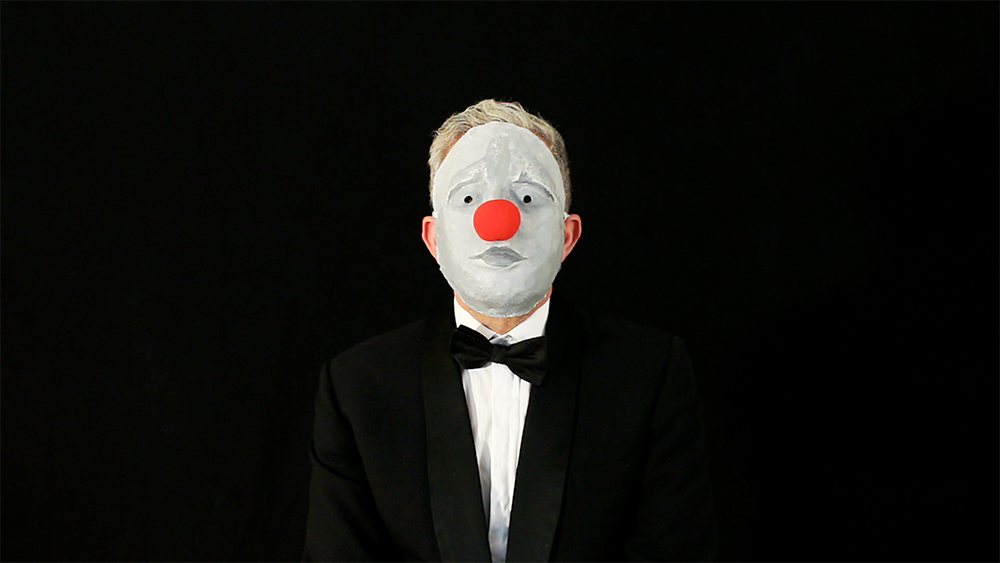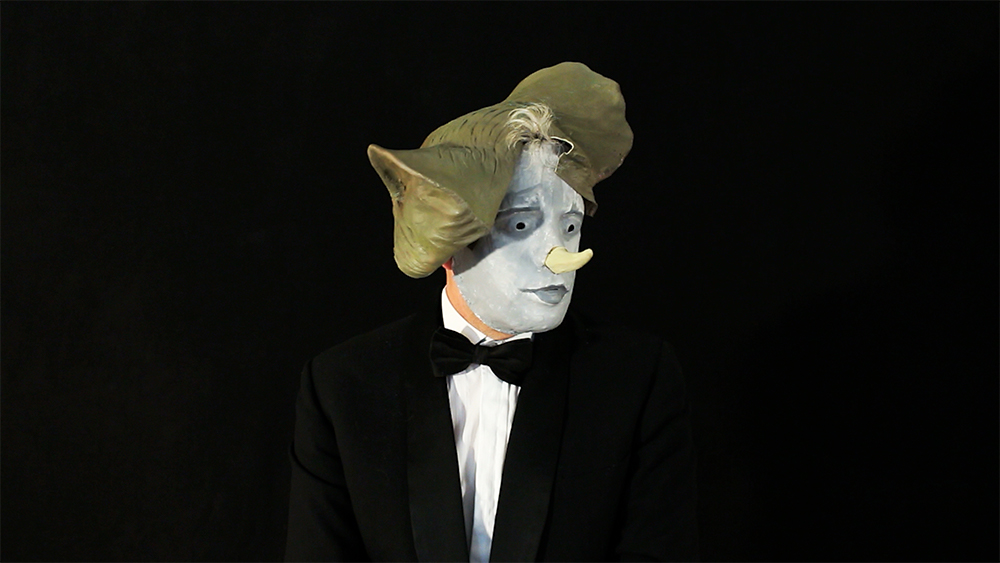I am an Elephant, 2014
من فیل هستم
Shahram Entekhabi's video artwork, "I am an Elephant," carries a powerful political message against xenophobia and neo-fascism while shedding light on the challenges faced by migrants and refugees. In today's world, an alarming statistic reveals that approximately 100 million people are displaced, seeking refuge and a new place to call home. However, they often encounter closed borders and rejection or, if accepted, face the heavy burden of sacrificing their identities and cultures.
Through the metaphorical journey of the elephant in the video installation, Entekhabi draws attention to the plight of migrants who are forced to confront societal barriers and prejudices. The persistent questioning from the clown character reflects the relentless scrutiny and skepticism faced by individuals seeking refuge, highlighting the need to challenge these prevailing narratives of exclusion.
The video installation serves as a poignant reminder that the struggle faced by migrants is not limited to their physical displacement but also encompasses the emotional and psychological toll of leaving behind their identities and cultures. "I am an Elephant" invites viewers to question the status quo and reevaluate the treatment of those who have been displaced. By providing a platform to discuss migration, identity, and the importance of cultural diversity, Entekhabi's artwork becomes a catalyst for fostering empathy and understanding.
In an era marked by rising nationalism and xenophobic sentiments, "I am an Elephant" stands as a political statement, advocating for the acceptance and celebration of diverse cultures. By shedding light on the injustices faced by migrants and refugees, the artwork encourages viewers to challenge preconceived notions and embrace a more inclusive and compassionate society.
Through its symbolism and narrative, "I am an Elephant" calls for solidarity and unity in the face of adversity. Entekhabi's critique of closed borders, the erasure of identities, and cultural assimilation aims to provoke dialogue and inspire action against the forces that perpetuate xenophobia and neo-fascism.
من فیل هستم, به چگونگی شکل گیری هویت که تحت تاثیر مباحث سیاسی، اجتماعی، اقتصادی و فرهنگی تکوین می یابد، می پردازد
من فیل هستم: داستان فیلی است که به شهر حیوانات که پر از شخصیتهای برجسته محلی : نظیر طوطیِ شاعر، خَرِ نجار، میمونِ روشنفکر و خیاطِ بز، و.... می رسد. در ورود به به شهرفیل زمین خورده و یکی از دندانهای عاجش می شکند.اهالی شهر که مطلع میشوند پیشنهاد می کنند که عاج سالم را روی پیشانی اش قرار دهند و خرطوم فیل را قطع کنند...
من فیل هستم, نقبی بر ساخت و سازی دیگرگون از مفهوم هویت است که به تأثیرات سیاسی، اجتماعی، اقتصادی، و فرهنگی دورههای تاریخی هم اشاره دارد. این پروژه بر اساس یک طنز تمثیلی نوشته شده و در شکل یک بازی موسیقی جلوه گر میشود و از عناصر فولکلور ایران الهام گرفته است. "من فیل هستم:" نمونه قیاسی برای
موضوعات اجتماعی سیاسی است و همچنین نگاهی انتقادی به جنبه های منفی ذهنیت ایرانیان نظیر پارانویا، خرافات و بیگانه هراسی دارد
ویدئو من فیل هستم, با الهام از هجو تمثیلی که پایه نمایشنامه موزیکال شهر قصه میباشد، شکل گرفته. این نمایشنامه که در سال ۱۳۴۶ توسط بیژن مفید نوشته شد با ضرباهنگی سنتی و با ارجاع به فولکلور ایرانی ،به یک نمایش موزیکال تبدیل شد. هرچند درنگاه اول شهرقصه نمایشنامه ای برای کودکان به نظر می رسد ولی مخاطبین اصلی آن بزرگسالان هستند. این نمایشنامه که سالهاست محبوب نسلهای مختلف ایرانیان است
Shahre Ghesseh* Bijan Mofid (1935 – 1984) was an influential Iranian playwright and stage director. His most famous work, Shahre Ghesseh (City Of Tales), set in a mythical city populated by various animals, Shahr-e Gheseh is an allegorical fable in which the fate of a visiting elephant strangely echoes the fate of Iran under the modernity espoused by its rulers in the twentieth century.
It is the story of an elephant walks into a town, falls down, breaks his tusk, and asks for help. The town's other animals including a fox, a monkey, and a parrot debate what to do next as the elephant waits and voices his opinions. elephant with a broken tusk, who is both “helped” and disfigured by the village community. With his tusk fastened to his face and his trump cut off, he has to present himself to the authorities under the new name of Manouchehr. This deals with falsification, altered identity and the weight of social conventions.
I am an Elephant appeared at Solo Exhibition:
2014: Animal Era, AARAN gallery, Tehran, Iran

